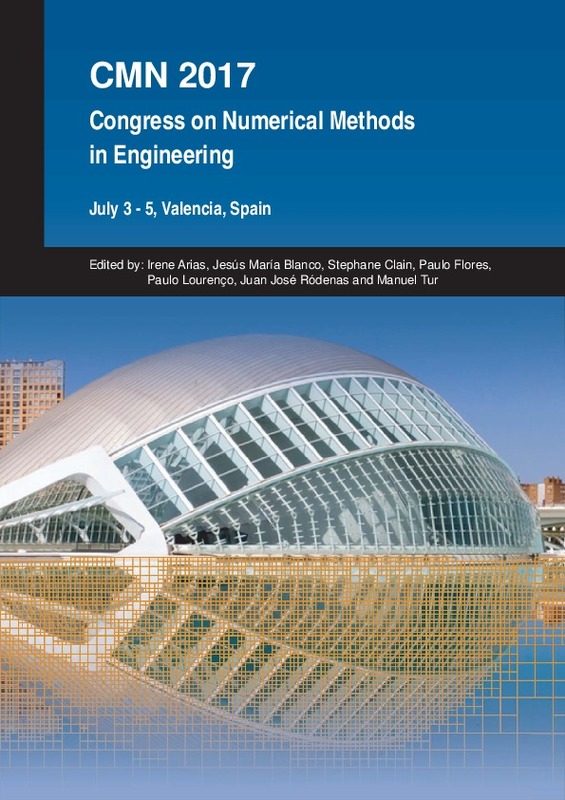JavaScript is disabled for your browser. Some features of this site may not work without it.
Buscar en RiuNet
Listar
Mi cuenta
Estadísticas
Ayuda RiuNet
Admin. UPV
From Metering to Water Balance
Mostrar el registro sencillo del ítem
Ficheros en el ítem
| dc.contributor.author | Francés-Chust, Jorge
|
es_ES |
| dc.contributor.author | Montalvo Arango, Idel
|
es_ES |
| dc.contributor.author | Izquierdo Sebastián, Joaquín
|
es_ES |
| dc.contributor.author | Herrera Fernández, Antonio Manuel
|
es_ES |
| dc.date.accessioned | 2022-01-18T08:12:07Z | |
| dc.date.available | 2022-01-18T08:12:07Z | |
| dc.date.issued | 2017-07-05 | es_ES |
| dc.identifier.isbn | 978-84-947311-0-5 | es_ES |
| dc.identifier.uri | http://hdl.handle.net/10251/179808 | |
| dc.description.abstract | [EN] Metering is an essential activity in Water Distribution Systems. Not only the utility revenue clearly is proportional to the metered values, but also the evaluation of the performance of the network relies on it. Both the input volume in the network and the metered consumption are normally not measured simultaneously. As a consequence, to calculate the water balance, approximations should be done regarding the metered consumption. The time needed for reading all water meters will influence the required approximations and, consequently, determine the inaccuracies in the water balance calculation. In the experience of these authors, this time can be about 10 days or go up even to three months depending on the characteristic of the system and how the meter reading is performed. Reading all meters simultaneously is materially impossible in most systems since household meters are not equipped with telemetry and in the cities that do have telemetry systems implemented, not all the customers are covered with this technology. In this work, we estimate the influence over the final water balance result of not collecting measurements from all the water meters simultaneously. Additionally, a tool is presented for automating water balance calculations, including the detection of anomalous readings due to reading failures or other causes. Finally, some considerations on the use of automatic meter reading are raised taking into account possible advantages and disadvantages from the points of view of both the consumer and the utility. | es_ES |
| dc.language | Inglés | es_ES |
| dc.publisher | International Center for Numerical Methods in Engineering (CIMNE) | es_ES |
| dc.relation.ispartof | Congreso de Métodos Numéricos en Ingeniería (CMN 2017). Actas | es_ES |
| dc.rights | Reserva de todos los derechos | es_ES |
| dc.subject | Water metering, Water balance | es_ES |
| dc.subject | Software | es_ES |
| dc.subject | Smarter metering | es_ES |
| dc.subject.classification | MATEMATICA APLICADA | es_ES |
| dc.title | From Metering to Water Balance | es_ES |
| dc.type | Comunicación en congreso | es_ES |
| dc.type | Capítulo de libro | es_ES |
| dc.rights.accessRights | Abierto | es_ES |
| dc.contributor.affiliation | Universitat Politècnica de València. Departamento de Matemática Aplicada - Departament de Matemàtica Aplicada | es_ES |
| dc.contributor.affiliation | Universitat Politècnica de València. Instituto Universitario de Matemática Multidisciplinar - Institut Universitari de Matemàtica Multidisciplinària | es_ES |
| dc.description.bibliographicCitation | Francés-Chust, J.; Montalvo Arango, I.; Izquierdo Sebastián, J.; Herrera Fernández, AM. (2017). From Metering to Water Balance. International Center for Numerical Methods in Engineering (CIMNE). 1619-1626. http://hdl.handle.net/10251/179808 | es_ES |
| dc.description.accrualMethod | S | es_ES |
| dc.relation.conferencename | Congreso de Métodos Numéricos en Ingeniería (CMN 2017) | es_ES |
| dc.relation.conferencedate | Julio 03-05,2017 | es_ES |
| dc.relation.conferenceplace | Valencia, Spain | es_ES |
| dc.relation.publisherversion | http://congress.cimne.com/cmn2017/frontal/default.asp | es_ES |
| dc.description.upvformatpinicio | 1619 | es_ES |
| dc.description.upvformatpfin | 1626 | es_ES |
| dc.type.version | info:eu-repo/semantics/publishedVersion | es_ES |
| dc.relation.pasarela | S\340845 | es_ES |






